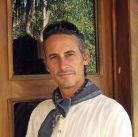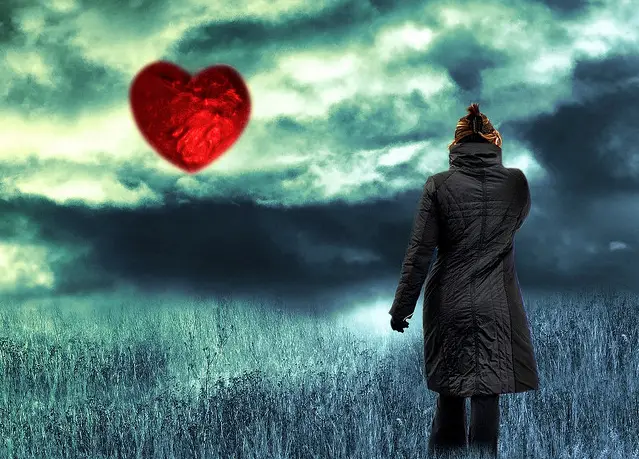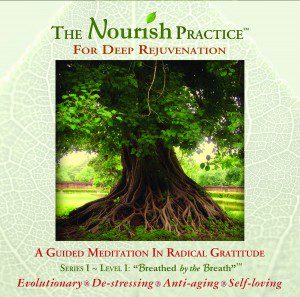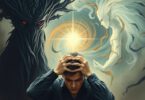By Jack Adam Weber L.Ac., Dipl. C.H.
Contributing Writer for Wake Up World
Despite its advertised promise, the experience of heartbreak is often chaotic, confusing, and messy. Most people want to get out of it as soon as possible. And for good reason; it hurts. Trying to escape heartbreak prematurely, however, leads to the perpetuation of pain, otherwise known as suffering. While everyone ´s journey through heartbreak will be unique, there are many helpful tips as well as a context of healing for how to embody this process in order to be released from the depths of pain and loss as a renewed, wiser, more genuinely loving person.
At some point each of us faces heartbreak. Whether we lose a loved one, our health, a piece of land or a whole planet to over-development and toxicity, each is a kind of heartbreak. Some heartbreaks bring us to our knees, and these occasions hold the promise for most growth and initiation into deeper love.
The degree to which we love is the degree to which we break open when we lose what we love. Grief is the central emotion associated with heartbreak. It ´s there under the anger we might feel. But, in order to get to grief we must eventually allow ourselves to let go, even temporarily, of anger and feelings of vengeance. This is difficult for some because anger gives us the illusion that we are in control and powerful. Yet, to reclaim deep power we must let ourselves grieve.
[pro_ad_display_adzone id=”110028″]
Grief is the means by which we heal the pain of love. We experience it as enduring sadness. Grief is how we clear our hearts of pain—our emotional body—and breathe life back into our ability to care and to be inspired. To grieve is as important as eating a clean diet (and in fact can allow us let go of addictions so we can choose a healthier diet in the first place), as helpful as fasting and breathing clean air. The grief of a good heartbreak clears us out down to our toes, which has physiological benefits as well.
Our bodies need to release emotional pain. We do this through feeling and expressing the sadness, anger, and tears of pain. We also reckon with pain by reflecting on our actions and choices, as well as assessing the circumstances and consequences of our experience. Contrary to New Age propaganda, telling the story of our heartbreak—as the pain of what has hurt us—helps us to release the physical experience of pain, better understand and feel what happened, find forgiveness, and to receive loving support from whomever will listen, including ourselves.
When we fail to grieve what hurts us, we set in motion the 10,000 evils. This is because we have failed to clear pain inside our bodies, from our psyches. When not dealt with, stuck emotional pain easily turns to violence. When we have been hurt and the energetic of grief cannot be sustainably released through sadness, remorse, and crying, our psyches will want to express it anyway. As part of the grieving process, we must also release our anger appropriately. We can do this via journaling, screaming, slamming pillows around, exercising, making sure we have the facts straight and not make assumptions, and express ourselves to those that have hurt us (most wisely engaged after we have processed the pain on our own to a degree).
Unreckoned pain prevents our embodiment of wholeness, from joyfully inhabiting our bodies. If our bodies, as extensions of this Earth, are riddled with unhealed pain, how can we contribute to a peaceful Earth? Because each of us has an innate sense and desire to live fully, we seek this sense of wholeness, joy, excitement, and love however we can. Indeed, we feel entitled to it, and when we cannot experience fullness sustainably—as inner richness supported by a modicum of external need fulfillment—we take what we can, however we can. This taking manifests as greed, exploitation of others and the natural world, as well as an excess of mindless, polluting entertainments and addictions of all kinds . . . all of which destroy what we love. Therefore, I posit that the destruction of the world is rooted in our personal pain, which we must heal collectively to create a thriving biosphere so that we in turn can thrive, now and into the future.
So, just as we try to release unprocessed grief any way we can (via external violence, in its diseased manifestation), we also try to find fulfillment, as the life to which we feel entitled and called, outside ourselves (via an excess of outward grasping in its diseased manifestation). Such externalizing of our need for inner richness falls squarely against ancient perennial wisdom of finding God or Truth inside ourselves. What I propose, then, is not only do we have go within, but we must go within to face the dark as well as the light in order to feel and think, and thereby live and work, to be of sustainable service to the world.
Growing Down
Psychologist James Hillman describes the process of maturing and psychological growth as a process of growing downward. Indeed, we have to grow down into ourselves in order truly be here and thereby grow responsibly into the world we inhabit. Grief is what I call the most soul-making of the emotions because it clears us out by dropping us down into our bodies, putting us in in direct contact with what our deepest essence. That ´s pretty spiritual, if you ask me. Grief is perhaps the least appreciated of the emotions, yet, unsurprisingly, the one with the power to liberate every thread of us unto full-bodied love. . . if we allow it to.
Indeed, grief and love are two sides of the same coin. They go together like Yin and Yang to create an experience of wholeheartedness. Even modern neuroscience points to their interdependence, as the brain centers for each are found contiguous to one another in the limbic system of our own brains. When we lose something dear to us, the grief of heartbreak comes knocking, and this is when we have the chance to deepen our love and to live with more passion and urgency, and eventually, with more purpose.
We grieve because we care, because we love something, and it hurts to lose it. Deep down most people want to love more, and if we took a poll, I imagine “loving more” would be close to the top of list for the meaning of life.
But if loving were so easy, I imagine our planet would be a different place. Perhaps, then, we are missing something crucial to our understanding and experience of love. For love, as an experience of wholeness, would create wholeness in ourselves and in our world with minimal suffering, not the protracted suffering we witness today. This suffering is the perpetuation of unprocessed pain, for pain when dealt with delivers us to the abundance of inner richness. Perhaps we have to infuse our pain with love. The missing component—the missing half, actually—is knowing how to love the painful, difficult, and heartbreaking . . . to infuse our pain with love. We don ´t have to enjoy it, but we do have to learn to accept and unite these two seemingly incompatible experiences. This union, I think, would go a long way to heal the pervasive imbalance on Earth. I call it “the dark heart of loving”.
For too long we have focused on the easy, literal, external light as opposed to the hidden, difficult, interior light (Rilke ´s advice echoes in the back of my mind: stay to what is difficult) that figuratively pours forth from us when we have cleared the pain in our hearts. For too long we have largely ignored this paradoxical light represented by the other half of the Yin-Yang symbol—by the Yin, interior realm of healing we mine in the depths of our bodies when we unearth our historical pains and release them, allowing that body-space to be occupied by juicy goodness instead of stagnation. No wonder we are burning up the planet—we have perpetuated hot, extroverted Yang and denigrated Yin, the Sacred Feminine principle associated with cooling, embodiment, nurturing, and wisdom via the dark, “failing” side of life. This propensity has been exacerbated by the industrial revolution, in which the interior of our psyches has been largely abandoned for the thrill of extroversion, stimulation, and externalized, fleeting pleasure-seeking.
Yet, if we look into what nurtures sustainable abundance, we find it steeped in prolific darkness. Take compose, for example. Via microscopic processes, what once was living is not wasted but turned into the nurturing substrate for new life by the providence of darkness. We also need our time to rest, to fall and break down, to decompose, in order to reorganize and rebirth new life informed by wisdom. This is deeply healing and life-sustaining, and the death and rebirth process of heartbreak (as the growing of integral love) is the ideal opportunity for such decomposition and renewal.
The grief of heartbreak is our soul ´s equivalent to the microscopic organisms that make compost in the garden. Grief is what breaks down the representation of what once was in us and prepares us for the next phase of our lives, which can be better and richer if we are good internal farmers and abide by our heartbreaks. The resurgence that follows the Yin collapse of our psyches is a healthy, sustainable Yang expression, quite different from the perverted, nature-depricating progress that today is taking down our world. Emotional composting—driven by grief and its heartbreak—create a fertile and sustainable body-mind capable of doing wise good in the world, and healing it.
Deep Dark Love
Common love, as a positive gesture of the heart is a wonderful thing; we all know this. Yet, it is not enough. It is not the fullness of love, which needs the hidden, feminine, dark empowered hidden light of our body-minds. Many spiritual teachers discuss the challenge of loving ourselves and feeling gratitude not only the midst of easy, abundant times, but in the midst of difficulty and breakdown. This is where deep, unconditional love-light is embodied as the pain of darkness is released and made conscious. This is how healers are initiated and consecrated, where we are initiated into responsible adulthood to ensure that we take care of ourselves, one another, and this life-sustaining planet that graciously hosts us. Once we embody love this way, we are able to move into the body of the world to effect true holistic healing that is not just human-centered, but healing to humans and Earth as one fluid and interdependent being.
Many choose not to enter this Dark Heart of Love, and for good reason, or so it seems upon superficial appraisal. As recently mentioned by Dr. Guy McPherson, we have many catch phrases discouraging those we claim to love so much from entering the dark heart of healing. While well-meaning, we may not realize how damaging it is to follow our own advice to “be tough”, “don’t cry”, to “stay busy”, “chin-up”. These advices all represent the fear of embodying and working through pain. They underappreciate love in its temporary disguise of transformational grief. We also ignore proactive grieving by resigning ourselves to the euphemistic denial that “time heals all wounds”. Heartbreak is radical surrender, but it is anything but passive. It is surrender for which we have to be espà¨cially attentive so to work through what comes up in us, moment to moment. If anything, joy is carefree, but not heartbreak.
It ´s tempting to want to bypass heartbreak, as if we actually could. For who wants to feel like shit if we don ´t have to, right? Many try to and end up in a nervous, half-awake malaise, secretly scrambling to end the pain as quickly as possible by any means, even making the same choices that broke the heart to begin with. In this scenario, the almost palpable jewels of heartbreak are ignored and glossed over, because we won ´t sink into the earth of our bodies to turn what is rough and soiled into the soft glow of resurrection—from pain into beauty. We cover up the wound without healing its source, only for it to erupt again, and we are presented with the same lessons to learn. When we half-bake heartbreak, we dishonor ourselves and all that we love. Heartbreak requires every bit of our humility, intelligence, strength, courage and care. All this energy—along with the apparently wasted pain of heartbreak—is reconciled in the bigger, wider, deeper love we become. . . but only when we persist through the pain of transformation without trying to escape in any significant way.
For these reasons, I recommend diving fully into heartbreak (which is really to let it flood into us) in order to be changed, for in hindsight we see that pain of heartbreak lets go of us when they are done with us. They come like messengers of love in disguise, as daemons which when we ignore them become our own figurative demons. Heartbreak is a calling, and to ignore such a strong calling to descend, surrender, and be changed via co-creation with these “gods” is to go against the way of “God” itself.
The paradox of love that gifts us wholeness is underappreciated. I think this is because many don ´t know it ´s possible to stay in our bodies, with the pain of what is, and emerge renewed more than we could ever effort or willfully choose. By this I am not saying that we should seek out pain or justify hurting others; quite the contrary. I simply advise that when heartbreak happens, we honor the process by staying with it for as long as it lasts. We are done with heartbreak when it lets us go, when we no longer feel the pain when we allow ourselves to think and feel into its events. Some heartbreaks never fully go away, nor should they. They keep us humble, appreciative, compassionate, empathic, cautious, connected to the fragility of life—in our hearts.
It ´s hard to believe, much less trust, that surrender to what feels like horror can creates such Beauty. We don ´t understand that to embody and thereby pass through heartbreak, is not only to learn more but to become more love. It is the hands-on, actual cultivation of highly regarded, yet under-cultivated, unconditional love—the love we grow as we abide by and take care of ourselves while we allow our pain to spill out from the pain of loss. The love we embody from this process is what allows us to acknowledge and minister to the pain in the body of the world, for what we cannot face in ourselves we cannot face and empathize with in others.
Heartbreak and its attendant grief are lifelong processes. They are not something we do once and are done with, any more than we love once and are done. With this said, there are different forms of grief, among the most important is that of going into our bodies and feeling into the places of historical trauma, especially that of childhood. This is a finite piece of inner work, which is “finished” when we have re-experienced and released the unconscious pain we carry for not having received the love we needed once ago. While finite, the work continues for the rest of our lives, just usually not so intensely, except for when we are triggered through subsequent crises and losses.
Healing our emotional pasts is most efficiently and safely done with a psychotherapist trained in body-centered process work, supplemented by one ´s own journaling and other body-centered therapies. Once we have cleared and integrated our past, we work to keep our hearts as clean as we can by a) abiding by subsequent disappointments and heartbreaks b) thoroughly feeling our feelings c) expressing our feelings appropriately d) creating boundaries to prevent being violated e) communicating and otherwise addressing any subsequent pain appropriately f) showing up to help others heal their pain.
Eco-Heartbreak
Planetary and environmental collapse can trigger our deepest fears and unprocessed emotional wounds. The way that we deal with these global challenges, including acknowledging they exist at all, depends to a large degree on the degree to which we have been able to face our personal pain. Appropriate responses to our world ´s falling apart include all the emotions we would feel in any more personal heartbreak: anger, fear, helplessness, confusion, despair, remorse, and of course, sadness. Carolyn Baker (PhD) has spoken eloquently on this topic.
The pain (destruction) of the Earth coincides with our personal pains, for each of us is a “little chunk of Earth”. For this reason, now is an especially poignant time to begin the deep work of healing ourselves via the Dark Night of the Heartbreak, for the Dark Night of collapse is descending upon us all now, even if we have managed to avert our core personal wounds all of our lives. Ironically, such emotional denial is precisely the cause of our demise, for what we ignore inside us eventually comes to haunt us in the form of external catastrophe—because our denial and subsequent stuffing of pain is what fuels our wisdomless actions that perpetuate monsters such as the pervasive pollution contributing to climate change. It ´s a death-wish, a collective, unconscious (yet heal-able) self-hatred for having failed to embody the fullness of love by working through our core wounds and shadow selves. This demonstrates how little difference there is between internal and external, again demonstrating the interdependence of Yin and Yang.
Love and grief are the very heart of life and support one another in the Yin and Yang of psycho-spiritual wholeness. This reciprocity of grief and love flows through us into the world and back again through us in a figurative symbol of infinity—the infinite beauty of our bodies in harmony with the body of the Earth. It is through heartbreak—when Yin and Yang are finally fully reunited in us as the union of grief and love—that we can taste this sense of infinity through ordinary experience, here on Earth, with and through one another and the body of the world. It is how we can experience what we call God or Source, because when we fall this deeply into ourselves we get to experience the depth of the proverbial universe inside us. It is how we cultivate “a heart as wide as the world”.
So, if you want to “become the change”, I invite you to consider reviewing and compassionately exploring and addressing the pain of your past. A radical changing of our internal landscape is what allows us to change the landscape of the world for better—as within, so without. Merely “being loving” is not enough because we can ´t be loving and proactively engaged enough when we harbor significant unresolved trauma.
Halting the horror of climate change is not easy or obvious or straightforward as it might seem. It has deep, invisible roots. This is why not enough has been done to avert it . . . because we can ´t help ourselves from our addictions . . . because we have not dealt with the roots of our heartbreaks. Let us enter our personal Dark Night of releasing and healing our pain in order to slow or halt the perpetuation of this horror. Even if we cannot, engaging this healing response now is appropriate for our times and will let our hearts break open so we could perhaps love as never before and so gift the beautiful Earth we have destroyed a small gift. With or without the specter of climate change and whether we will imminently destroy ourselves or not, this healing work is needed for any kind of good world we wish to inhabit, to nourish, and thrive in . . . including our own bodies.
Thank you for reading.
The Nourish Practice
Jack Adam Weber’s “The Nourish Practice” is an easy, guided meditation-Qi Gong practice in radical gratitude and self-love. It is an Earth-based, body-centered practice — at once physiological and mythological — that is deeply relaxing and replenishing, especially for modern-day burn-out syndrome, and requires little physical effort.
The Nourish Practice “resets your nervous system” and fosters a rich inner life. You can purchase The Nourish Practice as a CD or Digital Download here.
Previous articles by Jack Adam Weber:
- Relationships: The Costs of Staying When We Should Leave
- Emotional Work
- Choosing a Partner – How to Avoid Relationship Suicide
- Re-Thinking Love: Why Our Hearts Must Also Be Minded
- Spirituality – Reality Check
- 11 Crucial Tips for Better Digestive Health
- Shadow Work: Becoming a Sustainable Light Worker (Part 1)
- Oneness in Action: The GMO Eradication Movement
- After the Hurricane: Lessons from the Heart of Nature
- Relationships: How They Can Make Us Happier
- Heartbreak – Loving Ourselves Through Difficult Times
About the author:
 Jack Adam Weber, L.Ac. is a Chinese medicine physician, author, celebrated poet, organic farmer, and activist for body-centered spirituality. His books, artwork, and provocative poems can be found at his website PoeticHealing.com. He is also the creator of The Nourish Practice, an Earth-based rejuvenation meditation. Weber is available by phone for medical consultations and life-coaching.
Jack Adam Weber, L.Ac. is a Chinese medicine physician, author, celebrated poet, organic farmer, and activist for body-centered spirituality. His books, artwork, and provocative poems can be found at his website PoeticHealing.com. He is also the creator of The Nourish Practice, an Earth-based rejuvenation meditation. Weber is available by phone for medical consultations and life-coaching.
You can connect with Jack Adam Weber on Facebook or by emailing Jack@PoeticHealing.com.
[pro_ad_display_adzone id=”110027″]








